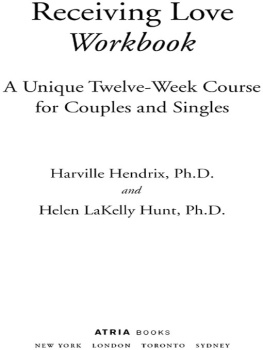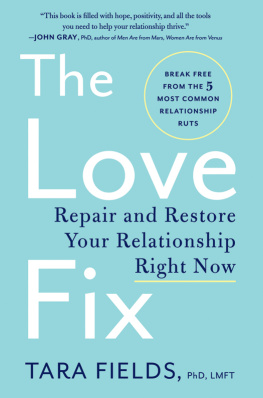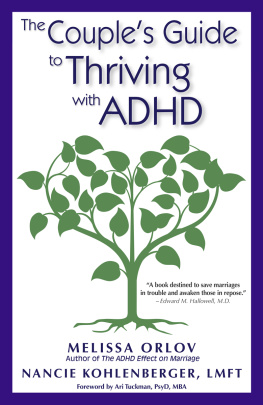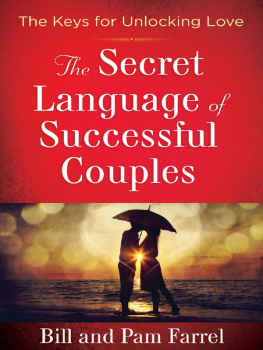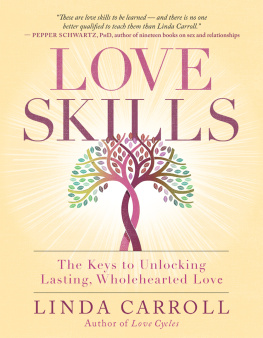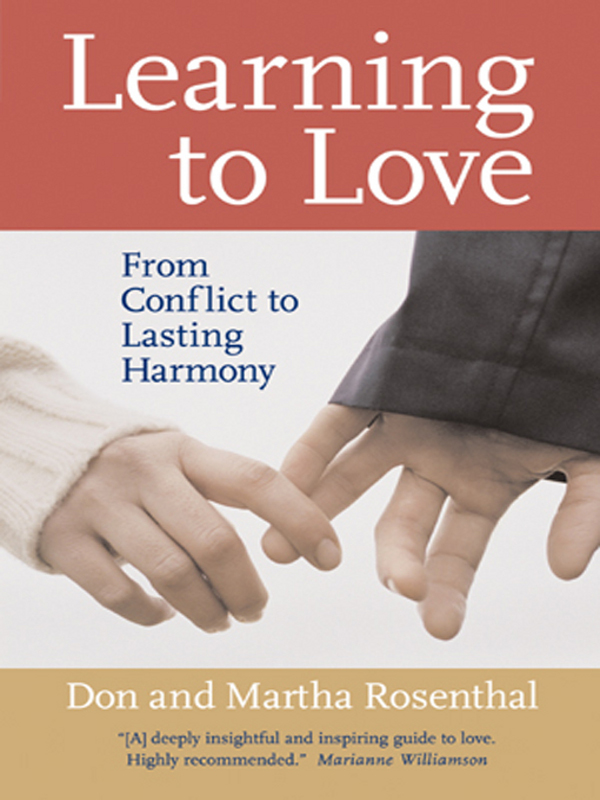Learning to Love
Learning to Love

From Conflict to
Lasting Harmony
Don and Martha Rosenthal
A Living Planet Book

Sterling Publishing Co., Inc.
New York
Library of Congress Cataloging-in-Publication Data Available
2 4 6 8 10 9 7 5 3 1
Published by Sterling Publishing Co., Inc.
387 Park Avenue South, New York, NY 10016
2006 by Don and Martha Rosenthal
Distributed in Canada by Sterling Publishing
c/o Canadian Manda Group, 165 Dufferin Street
Toronto, Ontario, Canada M6K 3H6
Distributed in the United Kingdom by GMC Distribution Services
Castle Place, 166 High Street, Lewes, East Sussex, England BN7 1XU
Distributed in Australia by Capricorn Link (Australia) Pty. Ltd.
P.O. Box 704, Windsor, NSW 2756, Australia
Designed by Nancy B. Field
Manufactured in the United States of America
All rights reserved
Sterling ISBN-13: 978-1-4027-3380-2
ISBN-10: 1-4027-3380-1
For information about custom editions, special sales, premium and corporate purchases, please contact Sterling Special Sales Department at 800-805-5489 or specialsales@sterlingpub.com.
To Aram
Acknowledgments

We wish to express our deepest gratitude to the following:
To the staff at Sterling Publishing Co. for their geniality and competence at every turn. Especially to Patty Gift, editor par excellence, who held the vision unfailingly and was a special pleasure to work with.
To Josh Horwitz, best and most indispensable of agents, for believing in us, taking up our cause, and ensuring that the book came to fruition.
To Simon and Stephen Pearce, for their encouragement and help with our earliest ventures in the publishing process.
To Joel Kramer, for all he taught us years ago, especially about yoga and playing the edge.
To friends and supporters too numerous to name, but especially Margaret Boone, Reza Bundy, Jeff Cotton, Stewart Cubley, Bill Culp, Mary McIsaac, and Richard Miller, for serving as sacred and loving witnesses to our process over the years and speaking so eloquently on our behalf.
Martha would also like to express her unending gratitude to Paramahansa Yogananda for awakening her deep love of God, through which she has been able to love Don and others in her life more fully.
To our especially dear friends and colleagues, Rich and Antra Borofsky, for their sustained love and support, and for all they have taught us about loving. Also to Rich for his wonderfully eloquent and generous Foreword.
To long-time cherished friends and companions Dan Breslaw and Judy Tharinger, for their loyal friendship throughout the years, and for seeing the value of our work from the beginning and helping make it known. Also to Dan for his encouragement, his editorial finesse in helping us hone our thoughts, and his devoted and unflagging assistance at every level, well beyond the call.
And finally, to the many, many couples we have worked with over the years, whose honest effort and willingness to open their hearts have never ceased to inspire us, and from whom we have learned so very, very much.
Contents

CHAPTER 12 Opening the Heart:
The Greatest Challenge
For one human being to love another: that is perhaps the most difficult of all our tasks, the ultimate, the last test and proof, the work for which all other work is but preparation.
Rainer Maria Rilke
Whenever your relationship is not working, whenever it brings out the madness in you and in your partner, be glad. What was unconscious is being brought up to the light. It is an opportunity for salvation.
Eckhart Tolle
Foreword

by Richard Borofsky, Ed.D.
Near the end of a dirt road in rural Vermont is a most unusual laboratory. Housed in a red clapboard cape cottage, this laboratory has no scientific instruments, computers, animals in cages, or scientists in white lab coats. There are only two researchers herea man and a woman, who have spent over thirty years together investigating with great dedication a single question: How can one cultivate an open heart in the context of a long-term committed intimacy? Their names are Don and Martha Rosenthal, and the book youre holding is the fruit of their inquiry.
My wife Antra and I have been frequent visitors to this laboratory, and have come to know these two researchers wellfirst professionally (were couples therapists and workshop leaders ourselves) and later through our deepening friendship. And it has been an extraordinary friendship indeed. The four of us have worked together, shared each others hospitality, walked and meditated together in every kind of weather and season, talked shop, cooked meals, laughed a lot, and confided to each other everything from our smallest anxieties to our deepest spiritual yearnings. Everything we have come to know about Don and Martha has increased our affection for them personally and our profound respect for their teaching. So, it is a great pleasure and honor for me to be able to introduce you to my dear friends and this wonderful book.
What you are about to read is a distillation of what Don and Martha have learned from their joint investigation of what it means to cultivate an open heart. As you will see, Learning to Love is both practical and inspirational. It is quite realistic about the many difficulties, limitations, and pitfalls of intimate relationship without being discouraging. It is enormously hopeful about the possibility of transforming even the most damaged relationships, yet it is never nave or simplistic. In a word, it is balanced. Learning to Love successfully integrates both psychological and spiritual perspectives on intimate relationship without falling into the mistakes or limitations of either.
Learning to Love also navigates quite skillfully the many dichotomies on which couples often founderdichotomies such as freedom and commitment, honesty and compassion, safety and risk-taking, change and acceptance. All these apparent polarities are resolved here quite elegantly by the understanding that true love has no opposite. It includes everythingdiscomfort, pain, anger, resentment, despairall the troubles that at one time or another afflict every serious relationship. In an authentically open-hearted relationship there is room for all of it.
This is what makes Don and Martha so successful in their work with coupleseven those who are in dire straits, believing there is no way to resolve their conflicts. As Learning to Love makes clear, when we are in the presence of an open heart, conflict is readily resolved. Problems begin to dissolve (as opposed to being solved), and genuine transformation is possible. Personal and interpersonal difficulties can become a vehicle for deeper intimacy, while fear, hurt, and shame are composted into a fertile soil where love can grow again. This is what Martha and Don are able to accomplish in their work, because theirs is a love inclusive enough to embrace the whole human condition.


